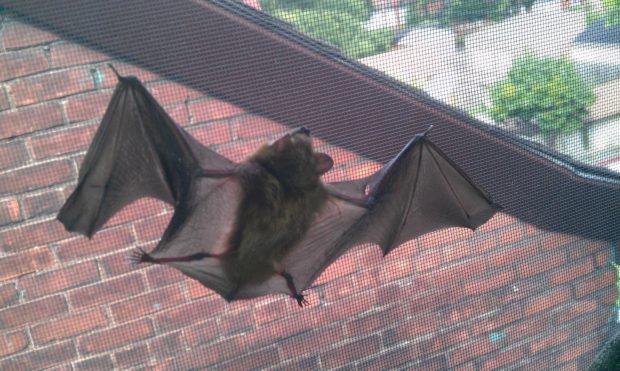Bats are common throughout Kitchener-Waterloo and are most active during summer. When bats get into your home they can cause you and your family a lot of stress. Bats inside your house are a clear indicator of a colony living elsewhere inside the structure.
The thought of a colony of bats occupying your walls and attic usually leads to plenty of questions for anxious homeowners. The first thing most people want to know is how bats are getting into their house.

How do bats get into houses?
Finding out how bats are entering a home can be difficult and knowledge of bat biology and behaviour certainly helps.
Here are a few reasons why it takes a trained eye to identify bat entry points:
- Bats are small. Bats are very small mammals and usually measure between 4 and 5 inches in length. Unlike mice, bats don’t chew holes to get in houses, they rely on their ability to contort and flatten their bodies to help them to fit into cracks and crevices as small as a ¼ inch. Their small size means that on any given house there could be dozens of potential bat entry points.
- Bats are nocturnal. During summer bats in Kitchener-Waterloo are most active at night. They come and go from their day time roosts under cover of darkness to feed on insects. It is often recommended to homeowners that they go outside at dusk to catch a glimpse of where bats are exiting but tracking the movements of tiny dark brown bats in the dark isn’t always easy.
- Bats enter from above. To avoid predators, bats like to make their home high above ground and will get into houses through openings located along the roof line. Depending on the height and shape of the house, spotting and confirming bat entry points without a ladder is nearly impossible.
- Bats don’t leave much evidence behind. Droppings and grease staining from their fur are the most common pieces of evidence left behind by bats. Without training and experience it can be tricky to pick up on the subtle cues bats leave behind.
Skedaddle Humane Wildlife Control
If you’ve had a bat in the house or believe there’s a colony living in the walls or attic it’s best to contact a professional bat removal service. Skedaddle Humane Wildlife Control has been removing bats from homes in Kitchener-Waterloo since 1989.
The first step in removing a colony of bats is to perform a complete inspection of the property. Skedaddle wildlife technicians begin by performing a 35-50 point inspection of your house including the roof and attic to identify how the bats are coming and going.
From there we develop a customized removal and exclusion plan that is guaranteed to keep your house and family bat free.
Get the benefit of our years of experience and practice. Call Skedaddle today – 519-658-4400.


